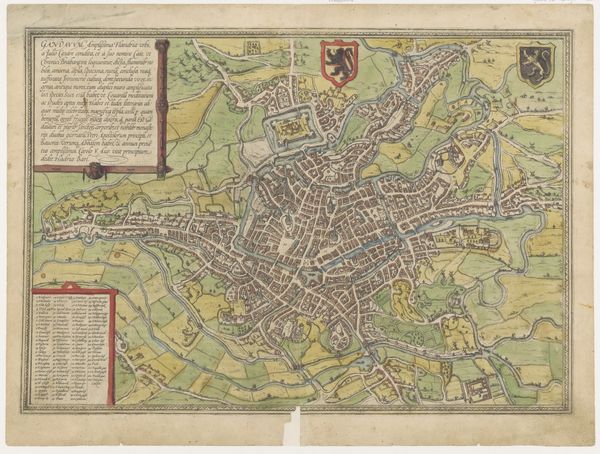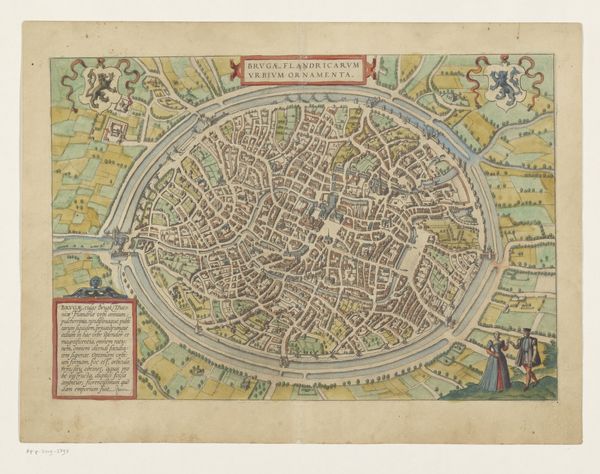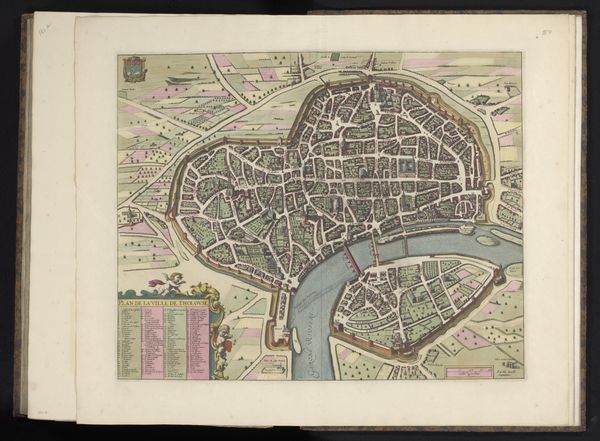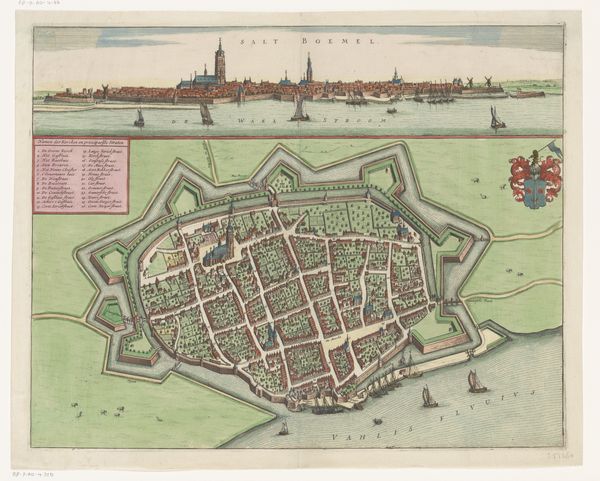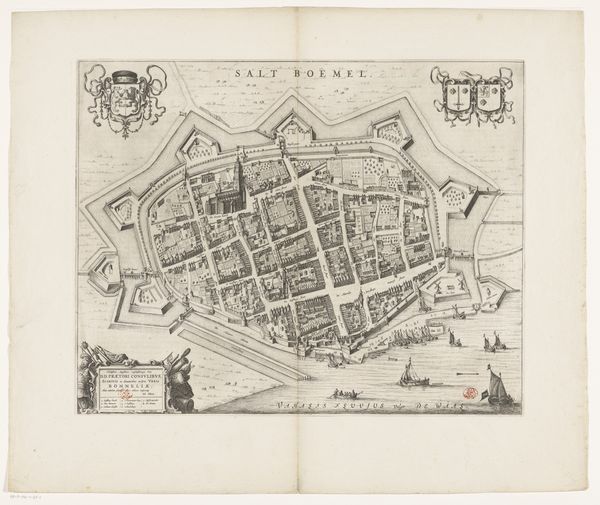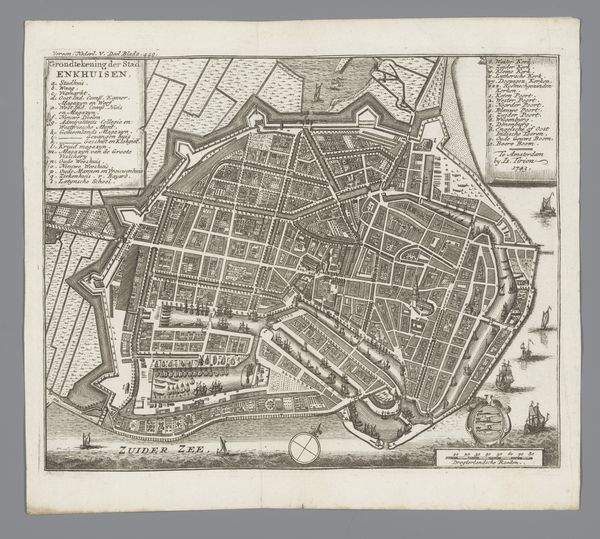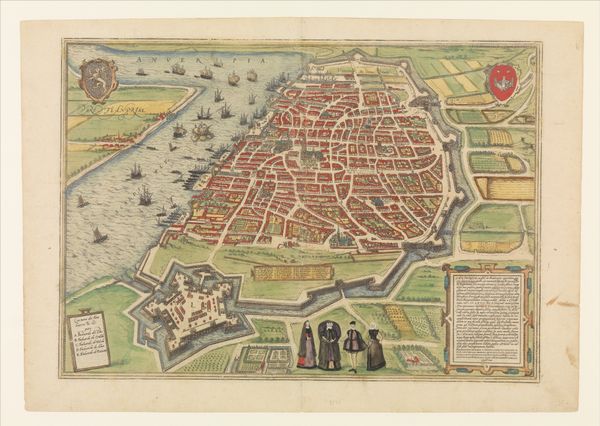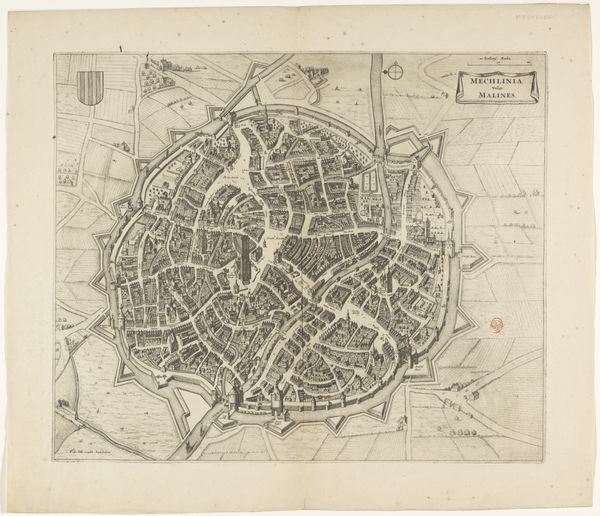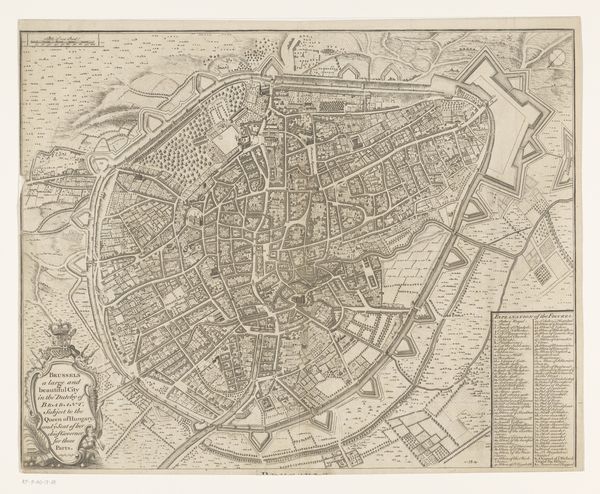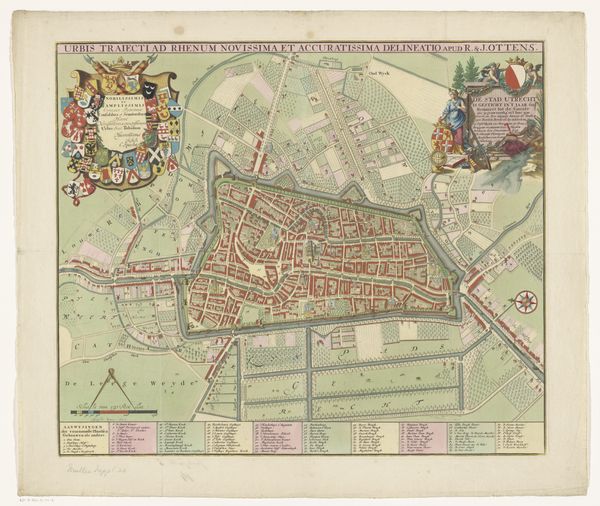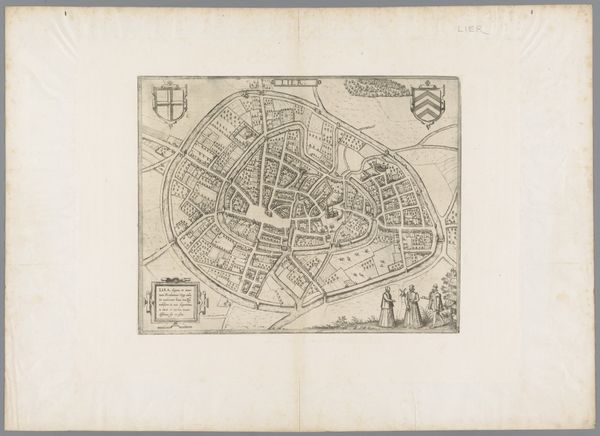
drawing, graphic-art, print, paper
#
drawing
#
graphic-art
# print
#
paper
#
11_renaissance
#
coloured pencil
#
geometric
#
line
#
cityscape
#
history-painting
Dimensions: height 332 mm, width 476 mm
Copyright: Rijks Museum: Open Domain
Editor: This is "Plattegrond van Brussel," a print from 1574 by an anonymous artist. It’s so detailed! I'm struck by the way the city is contained within this circular structure, a wall almost embracing it. What symbols do you find resonate within this work? Curator: The circular form itself speaks volumes. In Renaissance city maps, this shape can represent both containment and protection, but it also subtly evokes a sense of the cosmos. Notice how the city is rendered almost as an island, separated from the surrounding lands, perhaps signifying its unique identity or self-contained world. The heraldic shields are quite telling, hinting at civic pride and allegiances, but also acting as symbols of power and authority that define Brussels' place within a larger political landscape. Do you notice anything else interesting about their placement? Editor: Well, they're definitely in prominent positions in the upper corners... almost like guardians? It’s interesting how the symbols frame the scene. Curator: Exactly! Think about the cultural memory being preserved here. This image isn’t just about showing us where things are; it's about showing us what mattered to the people who commissioned and viewed it. Consider also how the lines of the roads, the structures of the buildings, all radiate toward a presumed center. Doesn't that also imply a sort of convergence, a center of power or meaning? Editor: That makes sense. I guess I hadn't really considered how much symbolism could be embedded in something that seems like a straightforward map. Curator: Indeed. Images of cities, even seemingly utilitarian ones, carried emotional and ideological weight. By looking at those repeated shapes, structures, and heraldic symbols, we start to see how Brussels of 1574 wanted to portray itself. The map becomes not just a depiction, but a constructed identity. Editor: This has really changed how I see maps, not just as tools for navigation, but as cultural artifacts in themselves. Thank you! Curator: My pleasure. Remembering that symbols communicate complex ideas can deepen our understanding of nearly any piece of art.
Comments
No comments
Be the first to comment and join the conversation on the ultimate creative platform.
